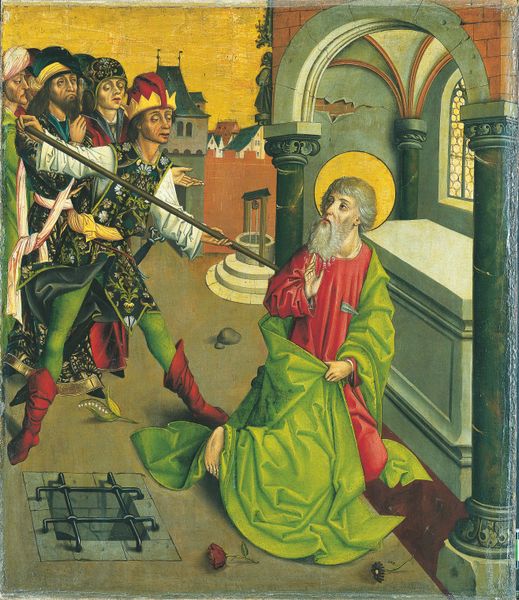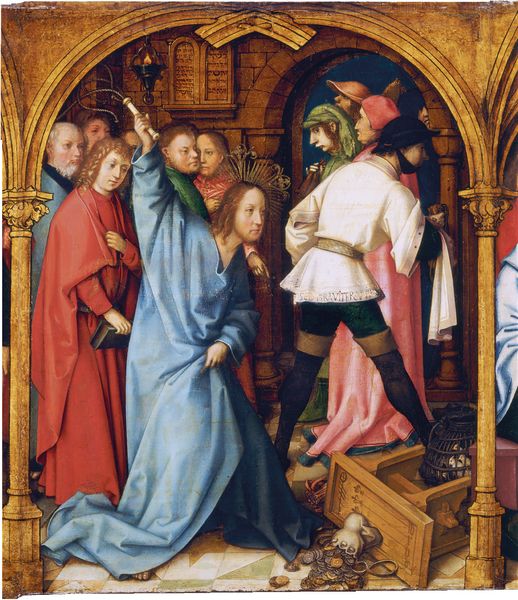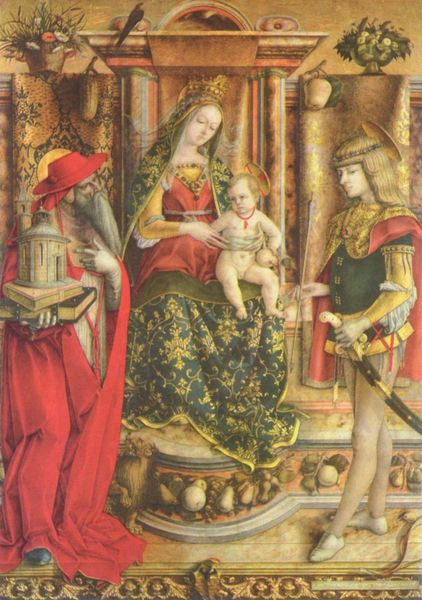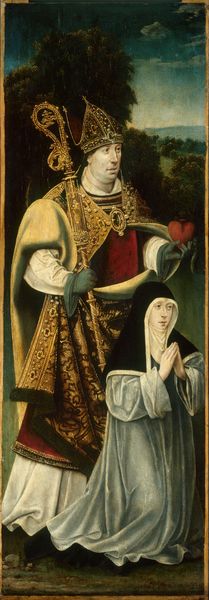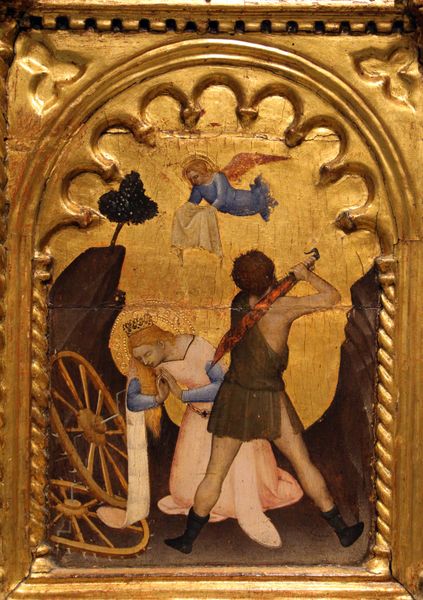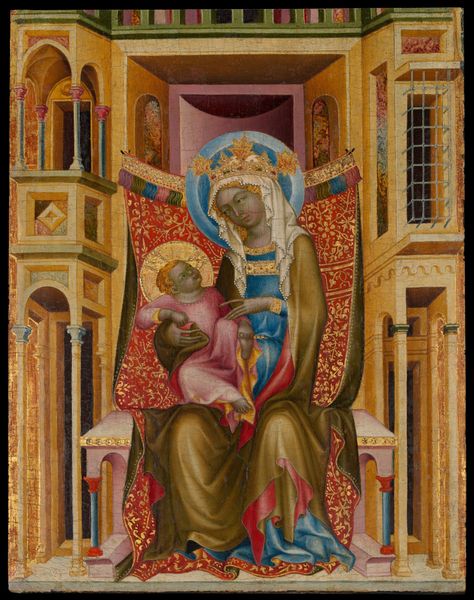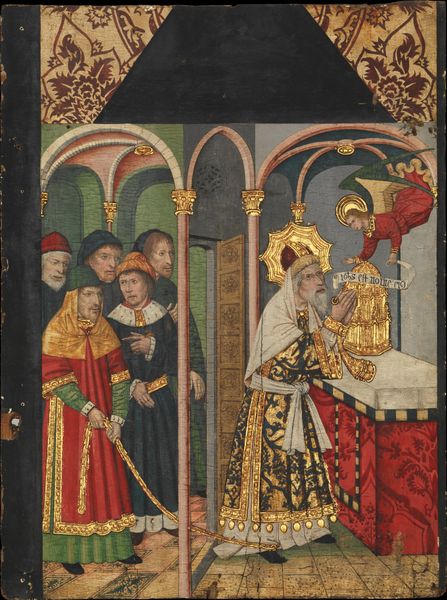
panel, painting, oil-paint
#
portrait
#
panel
#
allegory
#
painting
#
oil-paint
#
figuration
#
oil painting
#
mythology
#
history-painting
#
northern-renaissance
#
early-renaissance
Copyright: Public domain
Curator: This altarpiece panel by Hans Holbein the Elder, created around 1512, depicts The Martyrdom of Saint Catherine. What strikes you about it initially? Editor: The textures are remarkable—the cool steel of the armor juxtaposed with the rich folds of Catherine's dress, even the rough-hewn execution wheel. It speaks to the artist's awareness of varying qualities in the material world. Curator: Absolutely. Holbein, positioned at the transition of late Gothic to Renaissance styles, showcases a fascinating intersection of influences here. Notice how the central narrative is framed: on one side, the authoritative, worldly figures and on the other the destruction of the execution device, a symbol of Catherine's faith overcoming earthly power. Editor: And that execution wheel! You can almost feel its weight, its potential for inflicting suffering, rendered impotent. Was this kind of detailed realism meant to convey not only religious piety, but also a respect for artisanal crafts and skills? Curator: The panel's commission as an altarpiece is crucial. Consider its role within the larger context of the church and its intended audience. The martyrdom served as both a historical record, confirming the legitimacy of its teaching, and as a moral lesson intended to inspire. This piece reflects not only Saint Catherine's bravery but the prevailing social values regarding religious dedication during that period. Editor: The patron's influence, no doubt, extended to material choices as well as the selection of this story. It highlights the economic engine driving such workshops. And what about the artist's skill, his control of the materials to make such potent symbolism? Curator: Indeed. It's a dialogue between artistic expression, material culture, and socio-political influence. Holbein here is not just depicting a scene, but negotiating religious dogma within the social and economic realities of his time. Editor: A striking visual demonstration of the convergence of faith, power, and material processes. Looking at the work this way definitely changes my view.
Comments
No comments
Be the first to comment and join the conversation on the ultimate creative platform.


